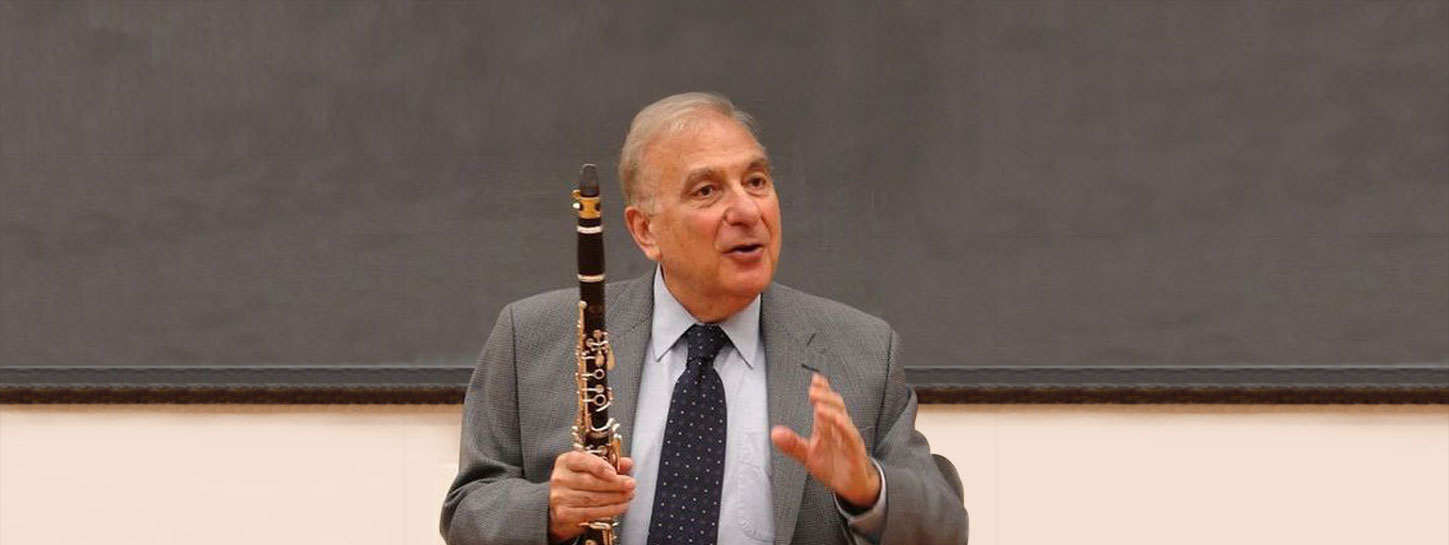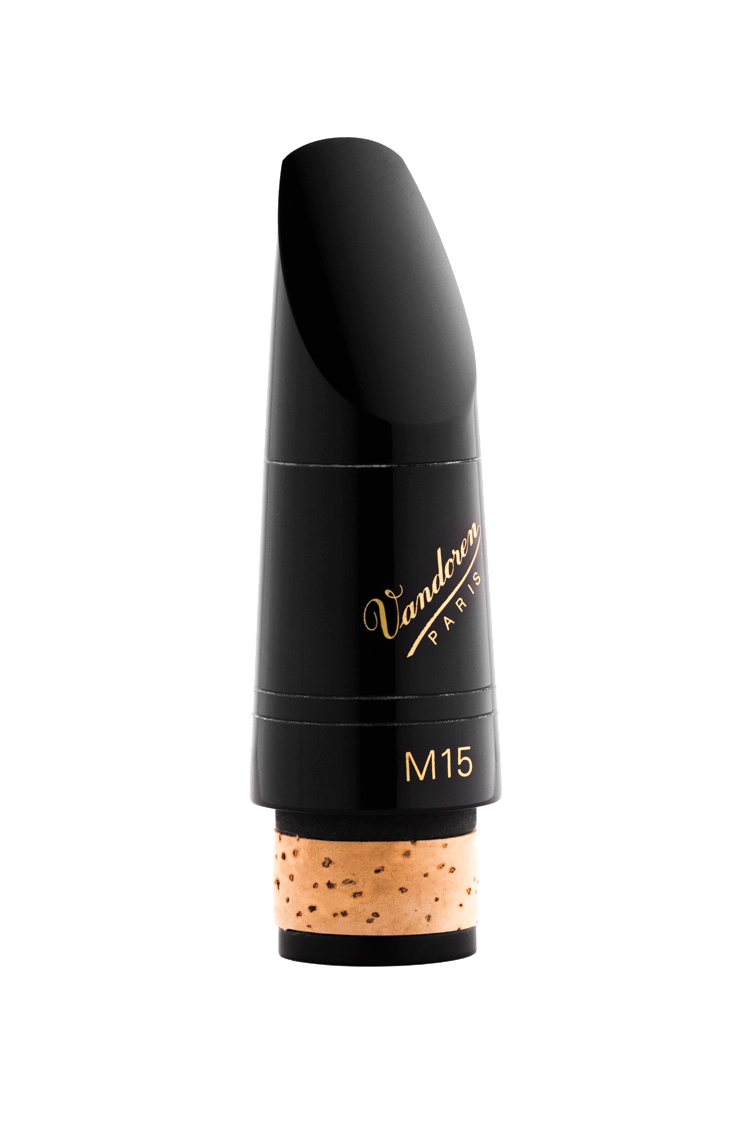Don Montanaro Talks Mouthpieces, "Schools" of Playing, and Sound
with Jean-Marie Paul
Date Posted: July 25, 2017

Donald Montanaro graduated from The Curtis Institute of Music in 1954 and shortly after his graduation became a member of the New Orleans Symphony. In 1957, he joined the Philadelphia Orchestra as the associate principal clarinet; a position he held until 2005.
Mr. Montanaro has performed at the Marlboro and Casals festivals and has toured Europe and the Far East as a soloist and as a member of chamber music ensembles. He was also the founder and the music director of the Philadelphia Chamber Ensemble. Mr. Montanaro was on the faculty of the Curtis Institute of Music.
* This interview is transcribed from an interview Donald Montanaro gave at Vandoren – Paris on June 15, 2000 after a masterclass. He is interviewed by Jean- Marie Paul.
JMP: When and how did your collaboration with Vandoren begin?
DM: I had established a friendship with Robert Van Doren about 40 years ago and then later with Bernard. One day, Bernard and I discussed the usefulness of having a model mouthpiece to tune at A 440, primarily for the United States. We also wanted the characteristics of the old Chedeville mouthpieces, a deeper baffle and larger bore with the centered and darker tone that this design gives. The object was not to copy the Chedeville, but to keep the features of the best ones, combined with the modern technology. Many Chedeville had different and uneven facings.
JMP: In terms of sounds, how do you describe the models of the 13 series?
DM: The M13 has the most compact centered sound of the group; M13 Lyre plays with a little more flexibility. The M15 now has a facing length that is just as long as many German facings and a tip that is more open than either of the M13 mouthpieces. Mouthpiece facings can have any number of variations. German models tend to be very long and require a very heavy reed, or you can have a short and closed model, an open and short model, or any number of these variations. We had been trying to design a facing that combined the best aspects of all these variations. After some experimentation we eventually arrived to what is now called the M15.

People currently playing a more open mouthpiece should be sure to try the M15 with a harder reed than they play on their present facing. My suggestion is to try the M15 with a #4 (or 3.5) reed, either V•12, traditional blue box, or something in that area. The M15 is not designed to play with too soft a reed. The 13 series mouthpieces were designed with a deeper baffle and a larger bore in order to produce a more mellow tone quality.
The 13 series mouthpieces also slightly lower the pitch. I know that many players in France and other parts of Europe are now playing the 13 series mouthpieces. I believe that the slightly lower pitch is beneficial because the basic tendency of the clarinet to become sharp, particularly in warm temperatures. For those players that have not yet tried the 13 series mouthpieces I think that, aside from benefiting from the slightly lower pitch, they will enjoy the dark, rich, and responsive sound of the 13 series, particularly with the M15 facing. The transition from the more open mouthpiece with a softer reed to a slightly closer mouthpiece with a heavier reed isn’t too difficult of a transition. I think that you will be surprised to find that you can attain a better projection of sound with more volume using this combination.
JMP: In the U.S.A., is there actually a unified school of playing or just individual players with different ways of playing?
DM: The United States is a very large country, so you naturally find many different ways of playing. Some I agree with and many I don't. Much of my schooling has been of the very Old French School. Daniel Bonade, who studied at the Paris Conservatoire, was the first clarinet professor at the Curtis Institute of Music, where I studied and now teach. Many of our finest players were either students of Bonade or students of students of Bonade. The great clarinetist Ralph McLane, who was a student of Gaston Hamelin, also had a great influence on me. I studied chamber music with the great French oboist Marcel Tabuteau and Marcel Moyse, the famous French flutist. As you can see my schooling was primarily French, but I also cultivated other ideas from hearing many fine players who came from Italy, Germany, Russia and many other countries to the United States.
Naturally, it is always necessary to adapt the needs of today in a large orchestra. I started to teach at the Music Institute of Music in 1980 and have passed on my concepts to my students, many of whom now occupy principal positions in many of our finest orchestras.
JMP: Do you think that there are currently more differences in playing style between the different countries?
DM: That is difficult to say. But I think that a gradual homogenization is taking place. Let us take the Curtis Institute of Music. It is a small school in which you can only enter by scholarship; you cannot pay to go there. In the coming semester I have four students, an Argentine, a Ukrainian, a Spaniard and an American. As you can see natural boundaries are disappearing. I expect this trend to continue to the point, where sometime in the near future, the differences between players will be more on an individual basis rather than a national one.
"I want my students to play from the low to the high register and from piano to forte with a focused, beautiful and even tone, to be able to make soft, gentle attacks in all registers, and to master the control of the clarinet." - Donald Montanaro
JMP: Would you please describe your method of teaching?
DM: During the first year with my students at the Curtis Institute, I start with the Rose 40 Studies and then the Rose 32 Studies. This is in order to work on the basics that I consider good tone, control, legato playing and staccato. I then follow with Rode, Polatschek, Jeanjean and various technical studies. I want my students to play from the low to the high register and from piano to forte with a focused, beautiful and even tone, to be able to make soft, gentle attacks in all registers, and to master the control of the clarinet. Technique should be played with an ease whereby you are not aware of the difficulties. When we arrive to this point, we move into the chamber, orchestral and solo repertoire. However, from the very beginning I try and cultivate a style of playing that is very expressive and musically thoughtful.
JMP: What is a good sound for you?
DM: When a player plays a wrong note or is out of tune, it is not a matter of opinion. Tone quality, however, is more subjective. We can nevertheless set some parameters. When a player has a wide sound in the low register and a bright, thin sound in the high register, or when the player has a hollow, unfocused tone in piano that spreads when increasing to forte are examples of poor tone quality. By achieving a full, rich, and quality sound, the player becomes free to express his musicality and artistry, which I find is impossible to achieve if you have not mastered these aspects of playing the clarinet.
JMP: Do you think that your sound has changed in 43 years of having played in the Philadelphia Orchestra?
DM: Slightly, yes. My sound is now a little bigger and heavier, because when I entered the orchestra I was accustomed to playing in small ballet and opera orchestras.
JMP: Do you use several mouthpieces at the same time?
DM: I use the same one all the time. On the Bb clarinet, I have tried many mouthpieces for a few days, but in 46 years I have used 6 mouthpieces regularly. On the Eb clarinet, I have played a Vandoren Perfecta mouthpiece for my whole career.
JMP: Is it a problem for players who use modified mouthpieces to find something similar to what they have when they want to change?
DM: That is a problem that I have tried to address. Between the M13, M13 Lyre, and M15, there are not enormous differences. I switched progressively in the same series, to give sensitive players various options. To the sensitive player small differences are very significant. Now, with the new M15, we have added a facing with enough opening for many players who heretofore found the M facings to close. It has been a great pleasure to work with Bernard Van Doren on these projects. He has been very co-operative, and I feel that he is devoted to having the highest quality mouthpieces in order to satisfy the most discriminating players. Bernard has assembled a wonderful team, all outstanding at what they do and a pleasure to work with.